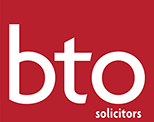02 November 2020
The Coronavirus Job Retention Scheme (CJRS), or furlough scheme, was due to come to an end at midnight on Saturday 31 October 2020 and was to be superseded by the new Job Support Scheme (JSS) from 1 November 2020.
Via a last-minute announcement on Saturday evening, the Prime Minister and Chancellor confirmed that the CJRS would be extended for a further month, “until December”, in light of the new 1-month national lockdown coming into effect across England on 5 November.
There was initially some uncertainty over whether this extension to the CJRS applied to Scotland, however information published on the government website later that night advised that businesses across the UK are being provided with the additional support.
The government has provided some limited detail on how the extended furlough scheme will work for the next month, which we have set out below. The JSS has been postponed and will be introduced following the “end” of the furlough scheme in December (date to be confirmed).
We have been advising numerous employers on the JSS and many have entered into written JSS agreements with staff which set out new temporary working arrangements due to come into effect from 1 November 2020. Employers must communicate with their employees urgently and explain the last minute delay to the JSS and how this will impact their work. If a JSS agreement was already reached, employers should seek the employee’s agreement to be furloughed until December instead. If no JSS agreement was reached, employers should seek the employee’s agreement that they will remain on furlough/flexi-furlough until December.
Here is the guidance available so far:
- This extended Job Retention Scheme will operate as the previous scheme did, with businesses being paid upfront to cover wages costs. There will be a short changeover period when businesses will be paid in arrears.
- The CJRS is being extended until December. The level of the grant will mirror levels available under the CJRS in August. For hours the employee does not work the government will pay 80% of wages up to a cap of £2,500 and employers will pay employer National Insurance Contributions (NICs) and pension contributions. (The furlough scheme was tapered from August to 31 October. For October, the maximum government contribution was 60% of normal pay (up to a cap of £1,875) and the employer contribution was 20% (up to £625)).
- As under the current CJRS, flexible furloughing will be allowed in addition to full-time furloughing. This means employees can work part-time and receive the furlough grant to cover 80% of unworked hours.
- Further details, including how employers can claim this extended support through an updated claims service, will be provided shortly.
- All employers with a UK bank account and UK PAYE schemes can claim the grant. Neither the employer nor the employee needs to have previously used the CJRS.
- To be eligible to be claimed for under the CJRS extension, employees must be on an employer’s PAYE payroll by 23:59 30th October 2020. This means a Real Time Information (RTI) submission notifying payment for that employee to HMRC must have been made on or before 30th October 2020. We understand therefore that recent new starters or employees who have continuously worked since March and never been furloughed can be placed on the scheme for this month. What is not clear is whether employees who were made redundant in anticipation of the end of the CJRS could be re-employed and furloughed for the next month. We await further guidance.
Much of the scheme will remain as per the current CJRS rules:
- Employees can be on any type of contract. Employers will be able to agree any working arrangements with employees.
- Employers can claim the grant for the hours their employees are not working, calculated by reference to their usual hours worked in a claim period. Such calculations will broadly follow the same methodology as currently under the CJRS. We await further crucial guidance setting out the precise calculations.
- When claiming the CJRS grant for furloughed hours, employers will need to report and claim for a minimum period of 7 consecutive calendar days.
- Employers will need to report hours worked and the usual hours an employee would be expected to work in a claim period.
- For worked hours, employees will be paid by their employer subject to their employment contract and employers will be responsible for paying the tax and NICs due on those amounts.
- For hours not worked by the employee, the government will pay 80% of wages up to a cap of £2,500. The grant must be paid to the employee in full.
- Employers will pay employer NICs and pension contributions, and should continue to pay the employee for hours worked in the normal way.
- As with the current CJRS, employers are still able to choose to top up employee wages above the scheme grant at their own expense if they wish.
- The Government will confirm shortly when claims can first be made in respect of employee wage costs during November, but there will be no gap in eligibility for support between the previously announced end-date of CJRS and this extension.
We await further clarity on a number of issues and understand that further details will be published shortly. Meantime, the priority for employers is to communicate this recent announcement to staff and seek their agreement to any consequential changes to their working pattern.
Contact a member of our Specialist Employment Team if you have any queries about the extension to the furlough scheme.
This update contains general information only and does not constitute legal or other professional advice.
Employment law:
Caroline Carr, Partner: E: cac@bto.co.uk / T: 0141 225 5263
Laura Salmond, Partner: E: lis@bto.co.uk / T: 0141 225 5313
Douglas Strang, Senior Associate: E: dst@bto.co.uk / T: 0141 225 5271


